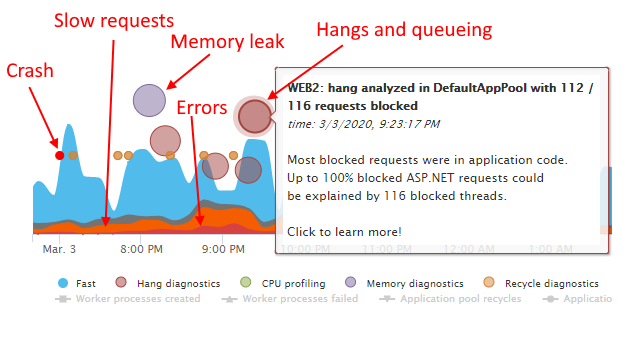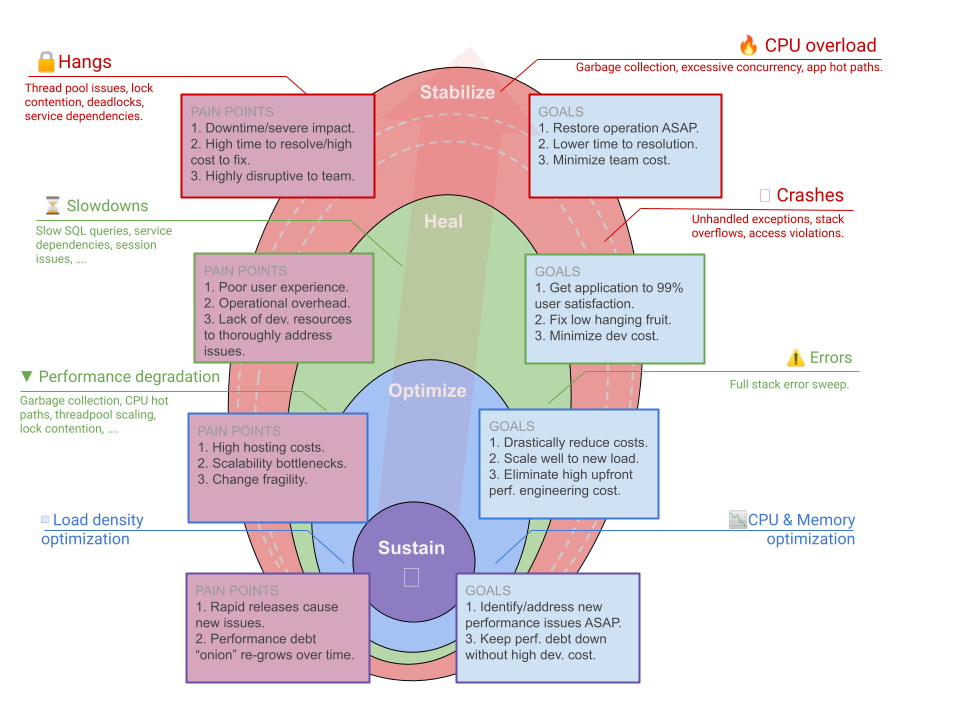IIS monitoring tools provide a wealth of metrics about your IIS websites, application pools, and requests.
But what they don’t provide is a blueprint for how you can use this data to proactively improve your website health, quality of service, performance, and costs.
(Impatient? Go straight to our holistic guide to proactive IIS monitoring)
While we designed LeanSentry to be a different breed of IIS monitoring (in that it actually understands the specific IIS and ASP.NET performance issues, and can analyze them just-in-time and down to code) … it still stops short of giving you that blueprint.
After users use the diagnostics to fix the urgent issues they came to us with, they often get paralyzed by the number of issues LeanSentry has detected in their applications.

Which brings me to the #1 question asked by LeanSentry users:
What should I do next?
A practical, proactive, performance improvement model
In the last 5 years, we’ve worked closely with many medium and large companies to develop a pragmatic approach to using LeanSentry diagnostics to systematically improve website performance.
Because LeanSentry automatically diagnoses most performance issues and detects optimization opportunities, the only thing left is to figure out what’s important and how to prioritize the work.
So, we’ve developed a model to do exactly that.
We unofficially call it “the performance onion”. The onion is made up of layers of performance issues and bottlenecks that develop over time in any production application.

You can then improve your website stability, quality of service, efficiency/scalability and cost by systematically working through several layers of issues:
- Stabilize: fix hangs, crashes, and CPU overloads causing severe incidents.
- Heal: maximize your satisfaction score metric to improve your website’s quality of service, by progressively reducing slow requests and errors.
- Optimize: use performance opportunities diagnosed by LeanSentry to increase efficiency and reduce cost.
- Sustain: stay on top of new issues detected by LeanSentry to maintain a clean performance state.
(We’ve run this system with hundreds of websites, but due to the small size of our expert team, we’ve only offered this model to our top tier Business tier plans.)
Today, we are finally releasing this as a public guide, which is how it should have been in the first place.
Get the full details and a handy actionable checklist at our IIS monitoring expert guide.